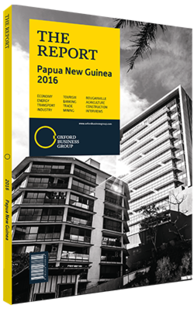Best practices scheme seeks to boost smallholder yields in Papua New Guinea
Even as investment dollars and export revenues have driven Papua New Guinea’s economy forward and provided new-found wealth to a segment of the population, large numbers of rural inhabitants who rely on the agriculture industry for their livelihood have yet to cash in on the country’s wave of prosperity. Because it remains the largest employer in PNG, agriculture is the lynchpin in many assistance programmes seeking to spur economic development among the lower-income demographics across the country. The government has remained active in this arena for decades through various assistance and training initiatives targeting the sector itself as well as supporting infrastructure, while international donor programmes continue to supplement these efforts through more targeted aid programmes.
Support
One of the most successful of these is the Productive Partnerships in Agriculture Project (PPAP) 2010-16 initiated by the World Bank’s International Fund for Agricultural Development, the EU, the government and the private sector, including smallholders. It targets two of the most widely grown cash crops in the country – cocoa and coffee – in a bid to boost the lot of smallholders by empowering them to grow greater quantities of export-grade commodities. This is done by providing smallholders with knowledge along with improving their access to support services and opportunities that can fetch more favourable prices for their produce. The goal of the PPAP is to strengthen industry coordination, facilitate links between smallholder farmers and agri-business through productive partnerships to allow for easier access to markets, technologies, and services, and improve critical infrastructure for market access.
On the ground, a key component of the programme has been educating farmers to employ better practices that maximise the potential of their crops. In PNG this can be challenging in some cases, as the traditional farming mindset for a product such as cocoa has in the past required a minimal amount of effort in between planting and harvest, while best practices are much more labour-intensive. These new practices require monitoring and maintenance of crops, first to clear out competing vegetation and maintain this space, and second, to periodically replenish the soil through fertilisation. As of June 2015 just under 4000 ha of cocoa had been replanted or rejuvenated with improved planting material and practices, with another roughly 11,000 ha targeted over the next four years. Improved coffee acreage was well on its way to achieving the 15,000 ha goal by 2019, with 10,737 ha planted or rejuvenated in June 2015.
Initial funding of $55m was approved for the project by the International Development Association. After seeing encouraging results nearing the end of the programme’s original planned lifetime through to 2016, the participants opted to extend the PPAP for another three years in order to fulfil its stated goals.
Encouraging Results
Since the launch, results have been largely favourable, with significant progress made towards its goals. As of June 3, 2016 nearly 56,300 beneficiaries were included in the programme out of the 60,000 target set for mid-2019 according to the World Bank. These beneficiaries have been extremely successful in boosting their output, with yields of coffee farmers more than doubling from 382 kg per ha in 2011 to 816 kg per ha by the end of 2014, far exceeding the original target yield improvement to 600 kg per ha. Cocoa yields experienced a similar spike in efficiency from 169 kg per ha to 376 kg per ha over the same period, although still short of the 600-kg-per-ha target set for June 2019. The increase in yield translated directly to increased revenue for the coffee farmers, with smallholder farmers’ net income surging 64% from PGK2000 ($683) in 2012 to PGK3280 ($1120) by the end of 2014. Cocoa farmer net income stood at PGK1370 ($468) at the end of 2014, nearing the 2019 goal of PGK1800 ($614).
You have reached the limit of premium articles you can view for free.
Choose from the options below to purchase print or digital editions of our Reports. You can also purchase a website subscription giving you unlimited access to all of our Reports online for 12 months.
If you have already purchased this Report or have a website subscription, please login to continue.

